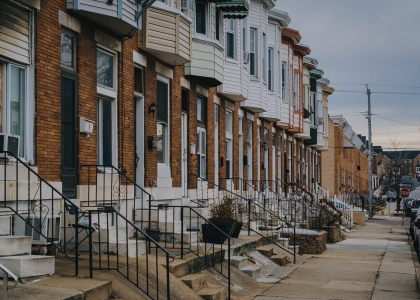Today, most American households pay for electric service via a two-part electric rate. This typically consists of a small, fixed customer charge ($ per month) and an energy rate applied per unit of electricity ($ per kilowatt hour). There are some variations on this model, including energy rates that vary based on time of day or total monthly consumption, but the basic structure of residential rates hasn’t changed much over time. In recent years, utilities have proposed significant departures to this format to address the changing dynamics of the electric utility industry.
Some of these changes have the potential to disrupt the economics of customer efficiency investments and may drive customers to use more electricity. In our new report, Rate Design Matters: The Intersection of Residential Rate Design and Energy Efficiency, we examine the relationship between the changes in residential electric rates and customer engagement in energy efficiency.
New Trends in Residential Rates
Under two-part rates, the first part is typically a monthly customer charge also known as a service fee or fixed charge. This charge collects costs associated with customer service, billing, and the meter and is typically less than $8 a month. The second part, known as the energy rate, collects the remaining costs to provide service via a volumetric rate per kWh. This rate has typically been flat, meaning the price does not vary by time of day or season. For some utilities, the flat energy charge evolved into tiered blocks, in which customers pay more or less for electricity as their consumption increases or decreases. The energy charge has also been collected in time-varying rates for some utilities, although customer participation for this option has historically been low.
Proposals from utilities in recent years are a departure from the simple two-part rate. Many proposals include higher customer charges, some as high as $70 a month. Most aren’t quite this high, but are still substantial. As shown in our new report, a review of 87 investor-owned utility rate cases from 2014 through January 2017 shows an average proposed increase of 61% (from $9.09 to $14.64), but an average approved increase of only 15%. While utilities are proposing much higher customer charges, the approved increases are lower than requested.
Other utility proposals include the implementation of demand charges for residential customers. Demand charges bill customers based on the maximum level of energy usage at one time during the billing cycle. This is known as peak demand and can be assessed in several ways. A demand charge would be billed in addition to the customer charge and energy rate. Only 20 utilities nationally offer demand charge options for residential customers. Proposals to implement mandatory demand charges for investor-owned utilities have been met with strong opposition, as was the case in Illinois and Arizona.
Customers Respond to Prices
Customers respond to prices for all goods and services. This is also the case with electricity. Ample evidence suggests that customers will conserve electricity when prices are high, and alternatively, use more electricity when prices are low. When prices are low and customers use more electricity, utilities will eventually need to make investments in the electric system to meet the increased demand, increasing costs for all customers on that system.
To better understand how some recent utility proposals to change rates might affect customer behavior, we reviewed several recent studies examining how customers respond to changes in rates. The evidence suggests that customers do respond to time-varying energy rates (prices that vary based on time of day and season), especially critical peak pricing and time-of-use rates. While peak demand reductions are a primary benefit of time-varying rates, we also found that customers generally reduced overall consumption. Of the 50 different time-varying pricing experiments we reviewed, the average peak demand reduction was 16% and the average reduction in overall consumption was 2.1%.
Rate Design Changes Affect Paybacks
We also considered how various iterations of revenue-neutral rate design could change the payback periods for energy efficiency measures. To do this, we reviewed usage data for an Arizona utility and relied on information from the Arizona Public Service Technical Resource Manual. We found that changes in rate design can dramatically alter payback periods for many measures. For example, the payback time in years for attic insulation increased by more than 30% when moving from a two-part rate to one with a $10 per kW demand charge.
Looking Ahead
Advances in technology, especially the implementation of advanced metering, allow utilities the opportunity to introduce time-based pricing options that better reflect system costs. While addressing concerns of revenue stabilization are important, high customer charges remove customer control of their bills, reduce the price signal to conserve electricity, and are not equitable to low-use customers. Time-varying rates, especially time-of-use rates and critical peak pricing, demonstrate benefits to customers and the utility system. There is little evidence related to how customers might respond to demand charges. Time-of-use rates are a better option if the objective of rate design is to communicate to customers via rates so they use electricity efficiently and understand their bills. They offer utilities an opportunity to recover the costs of providing service.



